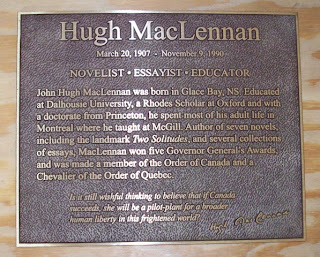Thomas P. Kelley
Uncanny Tales, vol. 2, no. 17 (May 1942)
Thomas P. Kelley bragged that when sitting down to write a novel he had "absolutely no idea what [would] happen, how the plot [would] unfold or how the yarn [would] end." I imagine the same was true when writing shorter pieces. Kelley claimed that he could produce three 4000-word stories a day with no rewrites or revisions.
"The Soul Eater" provides a good example of his galloping style. Anything that might slow the onward charge is brushed aside as "difficult to pen," a thing that "defies description". Elements that perhaps should have been mentioned earlier are treated thusly:
There was that one matter – that one important matter I have hitherto omitted – the wondrous flash and glitter that sparked the sky, and which we had plainly seen the previous evening – a glorious glitter of indescribable beauty, rising to the heavens and awe-inspiring – like the scintillating wonders of a thousand sunsets!
Typical Kelley, the plot is stereotypical pulp fiction. It's premise will be familiar to millions. The narrator, Prof John Carruthers, records his story while holed up in a New England mansion. Exactly ten years earlier, with the aid of a large inheritance and a map left by a Chinese mystic, he set out for the Gobi Desert in search of the Valley of Diamonds, "often discussed by the Ancients of China" and, I add, readers of Marvel comics.
Accompanying Carruthers' are a promising young archeologist, a disgraced sea captain and Ace Morgan, a boozing boxer who coulda been a contender. There is hardship to be endured, but things really go wrong when they near the valley and Carruthers has a wet dream. Or has he been visited by a succubus? Never mind. He awakens to find the sea captain missing!
"Captain Farley!" I ejaculated. "He's – he's gone!"Convinced that the captain has been abducted by someone or something from the valley, the remaining members of the team race onward to find Farley dead. The archeologist is next to disappear, but he's soon discovered alive in an ancient temple:
In the centre of that mighty hall was a raised, altar-like dais of stone, across which lay the bound body of young Reid. And standing over him, a wild joy of triumph lighting her features, was a naked, yellow-skinned woman, of such a weird, indescribable, barbaric beauty, as to be almost terrifying!Next thing you know, Su-Ella is hovering over the young man in bondage and, "her nude breasts rising and falling, her shapely body quivering with desire," sucks his soul from his mouth. Professor and pugilist both take flight. Of the two, Ace proves the faster runner – perhaps because Carruthers can't help but be distracted by Su-Ella's hot bod – and yet it's Ace who gets it: "With arms whipped tightly around him her naked body crushing his". Still running, Carruthers hears "a gurgling, moist and bubbling sound" and turns to see the former boxer "limp in her arms". Just when it looks like Carruthers himself will go flaccid, dawn breaks, the evening is over, and Su-Ella flies away.
A tall, nude yellow-skinned woman whose glorious body, in the glow of two nearby torches, seemed as living gold, that flowed and rippled in symmetrical motion with her every movement. A tumbling mass of wavy, jet black hair, fell almost to her ankles. Her shapely breasts, large and firm, seemed as living, yellow globes, and were adorned only with the two huge diamonds clasped to their high tips. And even as we made our silent entrance, she threw back her head in a wild, barbaric laugh, that revealed her white teeth; to gloat over the helpless man before her, then speak in the tongue of ancient China – a language I understood.
"And so, now you know, rash intruder. Yes, I am Su-Ella, Queen of The Black Star, who comes from that distant world at irregular periods to seek my victims here, and fears only the sunlight. How I am able to pass through the dark, cold wastes of space is a secret known to me alone!"
 |
| Sue Ellen |
I must write faster – faster! The hands on the nearby clock are both well on to four o'clock in the morning, and I must finish my story. Already the first streaks of gray are beginning to creep up in the eastern sky. But that same gray not only heralds the approaching dawn – it – it heralds my death! It heralds my ending in a manner so utterly and unthinkably horrible as to be brain-reeling!Students who have pulled all-nighters will recognize this panic.
And as I write I wonder. Could it be that she can find me, even in this distant land? It is possible that even at this late hour her hellish power could bring her to me, or me to her? I wonder if – if –
What – what's that I hear? It sounds like the flapping of wings! It – it is wings! Yes it is – and they are coming closer – closer to the open window. In the name of sanity – oh! oh, my God – what's coming through the wind—
FIN
There is one matter – one important matter I have hitherto omitted – the valley was indeed filled with diamonds.
Personal note: Kelley's ending took me back to my student days, time served as a clerk in two Montreal video stores, and this image from Media Home Entertainment's packaging for Sleepaway Camp:
A second note: Following last year's post on The Queers of New York, this marks the second time that I've reviewed a work that is not in my collection. I have Wollamshram of Wollamshram's Blog to thank for sending "The Soul Eater" my way.





























